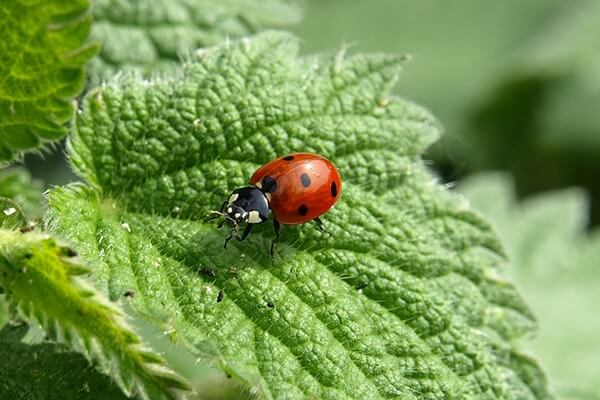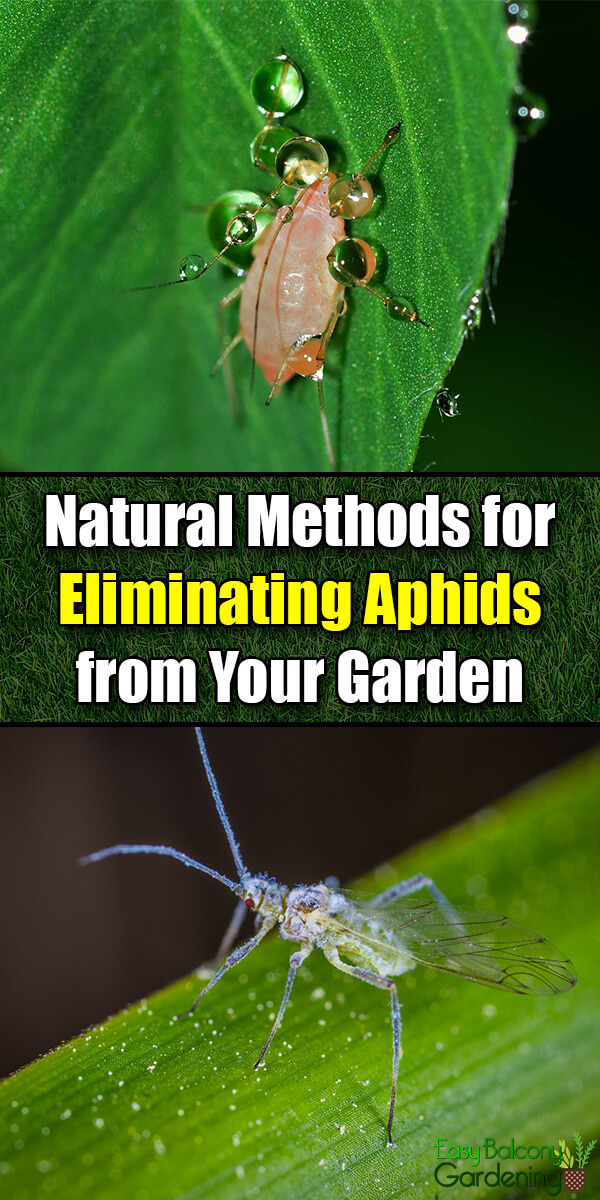See one aphid, and you know you need aphid control while the population is low. Somewhere out there is a colony eating your plants. Aphids also secrete honeydew, a clear sticky substance that gets covered with black fungi. Eliminate the aphids, and frequently the fungi also get eradicated.
Ladybugs as Natural Aphid Control
- Have ladybugs and you have natural aphid control! The ladybugs feed on aphids primarily. At times they will also feed on soft-bodied insects, white flies, and other insect eggs.
- In cold winter areas, aphid control means avoiding ordering the Japanese ladybugs, or Harmonia axyridis, also called Asian lady beetles. They start looking for warmth in fall weather and they will find cracks and vents in your house. Although they are harmless to human beings, these home invaders will annoy you. Ask for the Hippodamia convergens specie for aphid control. They are not home invaders.
- The disadvantage of using lady beetles in aphid control is that they scatter although food is abundant. To hold them longer upon being released, first irrigate the area where you want them to feed. They are quite in demand for aphid control as they eat voraciously. Mature ladybugs can consume up to a thousand aphids a day, the larvae half of that.
The Green Lacewing Larvae as Natural Aphid Control
- The green lacewing larvae are also good for aphid control. They feed primarily on aphids as well as other soft-bodied insects, particularly spider mites and mealy bugs. They are not very effective, however, as far as cucumber, tomato, and pepper plants are concerned.
- The larvae are gluttonous and are excellent for greenhouses and indoor gardens. You will need a sufficient food supply and adequate feeding room to satisfy your green lacewing larvae. If you do not have enough food for them, and there is not enough space to feed, they will eat each other.
- For better aphid control, release them early in the season about two weeks interval. Do it at least four times so that you can overlap them and still utilize their lifecycle to advantage.
- The adult lacewings are not carnivores like the larvae; they eat aphid honeydew. You should supplement their food supply if lacking, as you want them close by. You will need them to lay eggs in your garden.
- Commercial aphid honeydew is available.
Aphid Parasites as Natural Aphid Control
- A single female aphid parasite wasp, aphidius, can lay its eggs in about 200 to 300 aphids (one egg per aphid).
- A week after infestation, the Aphidius would attach the aphid to a leaf and the parasite would then eat the insides of its victim.
- It would weave a silken cocoon inside its victim, mummifying it.
- Four days from the weaving, at a temperature of 70ºF, the developed aphidius drills a hole out of the mummified aphid.
- The entire life cycle of the parasite is about three weeks.
Why Aphid Parasites for Aphid Control?
- The aphidius can search out aphid colonies even when these are scanty. If you already have infestations in your greenhouse, your aphidius should be established.
- Release three of them near the infested areas per greenhouse square yard every week for the next three weeks. For aphid control for indoor plants, one release may be sufficient.
- September through March is the best time to release aphid parasites, when their population is still low.
- Do not use yellow sticky traps for aphid control. Not only will they control whiteflies and other bugs, they will also attract the aphid parasites.
Keep your plants healthy. The first step to aphid control is to monitor them regularly.








